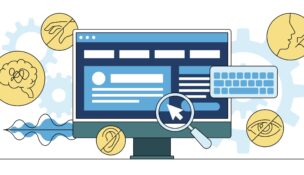Adapting to the New Norm: Post-Pandemic Work Culture and the Future of Remote Work
How do you close the gap between employee expectations and post-pandemic work culture? By creating a company culture that keeps employees engaged.
Niki Jorgensen //October 17, 2023//


Adapting to the New Norm: Post-Pandemic Work Culture and the Future of Remote Work
How do you close the gap between employee expectations and post-pandemic work culture? By creating a company culture that keeps employees engaged.
Niki Jorgensen //October 17, 2023//
New data published by the Federal Reserve Bank of Kansas City highlights the remaining gap in expectations between employees and employers on remote and hybrid work. In July 2022, employees reported they wanted to work from home about 42% of the time on average, twice as much as employers were offering at that point. Here lies the complications of the new post-pandemic work culture.
By November 2022, many employers had shifted their rules to accommodate employee preferences. The average employer in the study data allowed employees to work from home 28% of the week.
Despite compromise from employers, employees increased their preference for working from home to about 43% of the time, during this period. Employee expectations of working from home were still not aligned with their employers’ policies.
For many business leaders, this lingering gap can be a source of frustration. Management may struggle to understand why many employees do not see value in the return to the office three or more days a week.
While this frustration is completely understandable, leadership also needs to recognize the need for strategy and creativity in aligning workers’ preferences with business needs.
The solution is for leaders to refine the “why.” When employees understand the reasons and experience the value of in-office work, their preferences can shift in alignment with their employer’s needs. The requirements to make facetime feel meaningful include a robust organizational culture, strong mission and values, and ample professional development opportunities. The post-pandemic work culture doesn’t have to be at odds with your employees or bottom line.
READ: Best Hybrid Work Strategies — Success in the Post-Pandemic Corporate World
Resolidifying the post-pandemic work culture
The coronavirus pandemic was transformational in many ways. Many organizations proved themselves capable of adapting at a breakneck pace to totally unforeseen circumstances. With the unforeseen pivot to remote work, staff spent weeks, months and, for some, years productively working remotely.
As challenging and lonely as the pandemic felt, many newly remote workers appreciated the ability to balance their lives more effectively. Some also went months, or even a full year, without visiting the office and experiencing the myriad of benefits from face-to-face socializing with coworkers.
While leaders may have hoped the benefits of facetime would be self-evident, that has not necessarily been the case for the majority of remote workers. In a 2023 survey from Pew Research Center, 54% of remote and hybrid workers said their work arrangement hurt how connected they feel to co-workers.
To convince the remaining 46% of the value of the office, leaders can tap into their employees’ desire for connection and build a culture that values relationships. Employee recognition programs, corporate social events and frequent, meaningful one-on-ones with managers can reinforce positive relationships at work.
When employees work in a culture that encourages connection, the time they spend at the office will feel more meaningful, personally and professionally.
READ: Navigating the Post-Pandemic Workplace — Struggles, Solutions and the Return to Office Culture
Strengthening mission and values
Mission and values are critical for employees to feel engaged and satisfied at work. However, there are signs that remote and hybrid workers are disconnected from mission and values.
According to a 2023 survey from Gallup, only 28% of remote workers and 35% of hybrid workers agreed that their company’s mission or purpose made them feel their job is important, plunging from 36% and 43%, respectively, who agreed in 2019.
This disconnect from mission and values could be another reason why the work-from-home expectations gap has yet to close.
Restoring employees’ sense of purpose in their job is a key step to closing the work-from-home expectations gap. The most important step is clearly articulating the purpose of the organization.
First, examine mission statements and core values to ensure they continue to align with day-to-day operations. Then, make your mission and values as visible as possible.
KPIs should tie into this mission so teams can connect their own daily activities with the organization’s purpose. Reference mission and values during corporate meetings, one-on-ones and employee reviews and consider displaying the corporate mission statement at the office.
Finally, leaders need to take accountability, both by modeling these values for their teams and by calling out actions that contradict them. When workers see their leaders walking the talk, they will feel a stronger sense of purpose in their work and greater interest in being surrounded by coworkers at the office.
READ: Navigating the New Era of Employee Engagement — Everything You Need to Know
Offering professional development
Senior leaders know facetime is critical for employees to build relationships and find the mentors they need to advance in their careers. However, workers themselves may not necessarily see the value.
In the 2023 Pew Research Center survey of remote and hybrid employees, barely one in three agreed that working from home hurt their opportunities to be mentored at work. Of course, mentorship opportunities should be accessible to all employees, no matter whether they work remotely or not.
However, the office should also be valued as an environment for mentorship and learning and development (L&D). Leaders can offer in-person “Lunch and Learns,” bringing employees together to learn new skills, or group mentorship events over happy hour. Even on a low budget, these events can use existing spaces at the office.
Not only can emphasizing professional development help close the work-from-home expectations gap, but it can also increase employee retention. A McKinsey study in 2022 found employers tend to underestimate how much employees value the potential for advancement, leading to higher attrition rates. By taking professional development seriously, employers can win over their workers in more ways than one.
Two years after the coronavirus pandemic began, the work-from-home expectations gap between employees and employers remains. The steps to closing the gap — a thriving organizational culture, a well-defined purpose and high internal mobility — are fundamental to an organization’s success.
 Niki Jorgensen is a Managing Director of Client Implementation with Insperity, a leading provider of human resources offering the most comprehensive suite of scalable HR solutions available in the marketplace. For more information about Insperity, call 800-465-3800 or visit www.insperity.com.
Niki Jorgensen is a Managing Director of Client Implementation with Insperity, a leading provider of human resources offering the most comprehensive suite of scalable HR solutions available in the marketplace. For more information about Insperity, call 800-465-3800 or visit www.insperity.com.

























